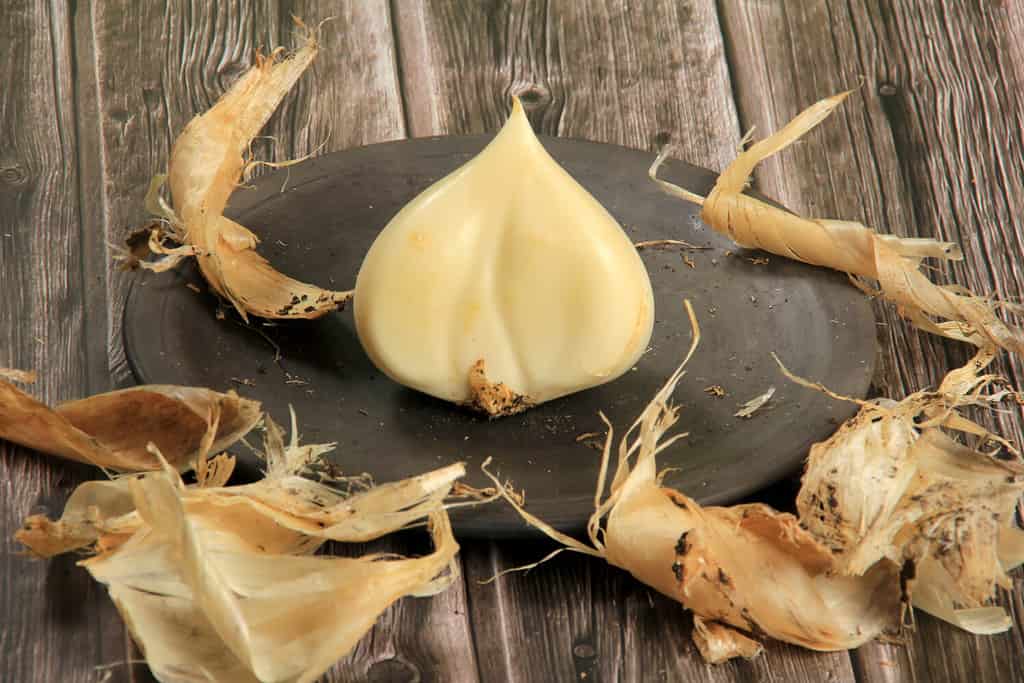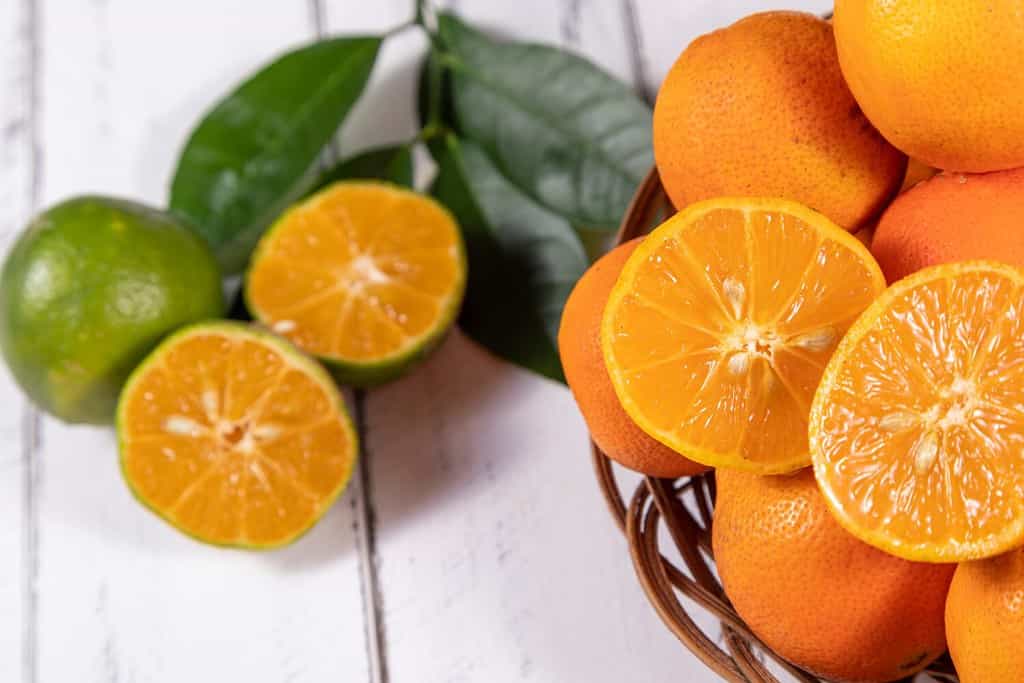Peacocks are a sight to behold with their majestic plumage and regal demeanor. However, these vibrant birds can sometimes become a nuisance in gardens and open spaces. Whether you’re a peacock enthusiast or simply looking to keep them away from your property, understanding the smells they dislike can be an effective solution.

Let’s explore the different types of peacocks, the scents they find repulsive, and how to use this knowledge to your advantage in keeping these birds at bay.
Understanding Peacocks:

Certain smells can repel these two common species of peacocks.
©Christine C Brooks/Shutterstock.com
Before delving into the smells that repel peacocks, let’s take a moment to familiarize ourselves with the two primary species of peacocks and their subspecies:
Indian Peafowl (Pavo cristatus):
The Indian Peafowl, commonly known as the Indian Peacock, is one of the most well-known and recognizable species of peafowl. It is native to the Indian subcontinent and is renowned for its stunning appearance and vibrant plumage. Here are some key characteristics and facts about the Indian Peafowl (Pavo cristatus):
Physical Characteristics:
Plumage:
The Indian Peacock is famed for its mesmerizing plumage. The male, known as a peacock, boasts a train of iridescent feathers that can reach up to six feet. These feathers are adorned with colorful “eye” patterns in shades of iridescent blues, greens, and purples. The rest of its body is predominantly blue and green, with a distinctive crown of blue feathers on its head.
Female (Peahen):
Female Indian Peafowls, called peahens, lack the extravagant plumage of the males. They have a more subdued appearance with brownish-gray feathers, which provide effective camouflage for nesting and raising their young.
Range and Habitat:
Indian Peafowls are native to the Indian subcontinent, including India, Sri Lanka, and parts of Pakistan, Bangladesh, and Nepal. They are highly adaptable and thrive in various habitats, including forests, grasslands, and cultivated areas.
Behavior and Diet:
Indian Peafowls are omnivores, feeding on a diet of grains, seeds, fruits, insects, and small reptiles. They are often found foraging for food on the ground.
During the breeding season, male peacocks display their magnificent plumage in intricate courtship rituals to attract peahens. They fan out their tail feathers, create a visually striking display, and produce distinctive calls to woo potential mates.
Vocalizations:
The Indian Peacock is known for its loud and distinctive calls, which can be heard over a considerable distance. Their calls are often described as “meow” or “may-awe,” they are most vocal during the breeding season.
Conservation Status:
The Indian Peafowl is listed as “Least Concern” on the International Union for Conservation of Nature (IUCN) Red List of Threatened Animals. It is a relatively secure species in the wild, although local populations may face threats due to habitat loss and hunting.
Cultural Significance:
The Indian Peacock holds cultural significance in India and has been a part of Indian art, mythology, and folklore for centuries. It is the national bird of India and is often associated with beauty, grace, and divinity.
Indian Peafowls are a symbol of natural beauty and have captivated people around the world with their breathtaking plumage and regal presence. Their striking appearance and cultural importance make them a beloved and iconic species within their native range and beyond.
Green Peafowl (Pavo muticus):

©Panji Gusti Akbar / CC BY-SA 4.0 – License
The Green Peafowl, also known as the Green Peacock, is a striking and less well-known species than the Indian Peafowl. The scientific name for the Green Peafowl is Pavo Muticus. This species is native to Southeast Asia and is known for its distinctive, vibrant plumage and behavior. Here are some key characteristics and facts about the Green Peafowl:
Physical Characteristics:
Plumage:
Green Peafowls exhibit vibrant and unique plumage. Males, called peacocks, have elongated and colorful feathers on their tails. These feathers are adorned with striking patterns in shades of green and bronze, with characteristic “eye” markings. The rest of their body is typically iridescent green or blue with some brown and black markings. Their head features a crown of green or blue feathers.
Female (Peahen):

©Ron Knight / CC BY 2.0 – License
The females, known as peahens, have a more subtle appearance than males. They lack the extravagant tail feathers and are predominantly brown and mottled to provide effective camouflage while nesting and caring for their young.
Range and Habitat:
Green Peafowls are native to several countries in Southeast Asia, including Cambodia, Indonesia, Laos, Myanmar, Thailand, and Vietnam. They inhabit various environments, such as dense forests, grasslands, and swampy areas. They are often associated with riverine habitats and are known to roost in trees at night.
Behavior and Diet:
Green Peafowls are omnivorous birds with a diet that includes a variety of foods such as seeds, fruits, insects, small reptiles, and amphibians. They forage on the ground and are agile tree climbers, using their strong legs and feet to grasp branches.
During the breeding season, male Green Peafowls display their magnificent plumage in intricate courtship rituals, similar to Indian Peafowls. They fan their tail feathers, perform dances, and call loudly to attract females.
Vocalizations:
Green Peafowls are known for their loud and distinctive calls. The calls of male peacocks can vary but often include sounds resembling screams or cat-like yowls. Their vocalizations are most prominent during the breeding season.
Conservation Status:
Green Peafowls are currently listed as either “Endangered” or “Vulnerable” on the International Union for Conservation of Nature (IUCN) Red List of Threatened Species, depending on the region. They face significant threats due to habitat loss, hunting, and the illegal pet trade.
Cultural Significance:
In some regions of Southeast Asia, Green Peafowls hold cultural significance and are considered symbols of beauty and grace. They are sometimes associated with local myths and traditions.
With their striking plumage and unique appearance, Green Peafowls are a captivating and ecologically important species native to Southeast Asia. Their conservation is of growing concern due to habitat degradation and hunting, making efforts to protect and conserve them crucial for their survival in the wild.
Smells Peacocks Dislike:
Now that we’ve explored the two primary species of peacocks let’s discuss the smells that both Indian Peafowls and Green Peafowls find repulsive:
1. Garlic

Garlic works well to deter peacocks from exploring your garden.
©SHARKY PHOTOGRAPHY/Shutterstock.com
Both Indian and Green Peafowls have a strong aversion to the spicy scent of garlic. Planting garlic in your garden or scattering garlic cloves can deter them effectively.
2. Citrus

This natural repellent keeps unwanted birds out of your yard.
©Murilo Mazzo/Shutterstock.com
The sharp and tangy fragrance of citrus fruits, such as lemons and oranges, is another scent that peacocks find unpleasant. Citrus peels or sprays can serve as a natural repellent for both species.
3. Vinegar

While distilled vinegar works exceptionally well at repelling peacocks.
©iStock.com/Michelle Lee Photography
The acrid smell of vinegar, mainly white, can discourage Indian and Green Peafowls from frequenting your space. Dilute vinegar with water and apply it to the areas you wish to protect.
4. Spices

A wide range of spices can keep unwanted pests away.
©iStock.com/monticelllo
Certain spices like black pepper, cayenne pepper, and chili powder emit strong odors that both species find irritating. Create spice barriers or sprinkle these spices in their path to ward them off.
5. Strong Floral Scents

Some flowers, like the marigold, actually keep peacocks away.
©EQRoy/Shutterstock.com
Contrary to popular belief, not all flowers attract peacocks. They avoid areas with solid floral fragrances, so planting flowers like marigolds or lavender can help keep Indian and Green Peafowls at a distance.
With their striking beauty and distinctive calls, peacocks can charm your surroundings. However, knowing how to deter them effectively is essential when their presence becomes challenging. By understanding the smells peacocks dislike and applying natural repellents, you can peacefully coexist with these majestic birds without any unwelcome disturbances.
To maintain a harmonious environment, consider implementing these scent-based solutions to discourage peacocks from visiting your property. By respecting their preferences, you can achieve the balance between enjoying their elegance and preserving the serenity of your space.
By following these simple tips, you can have a peacock-friendly garden without the disruption they may cause. Understanding the peacocks’ aversion to certain smells allows you to create a sanctuary where you, your plants, and these magnificent birds can coexist with minimal conflict.
Enhance your living experience by practicing these techniques and creating an environment where you, your garden, and the peacocks can all thrive together.
The photo featured at the top of this post is © iStock.com/Robert Way
Thank you for reading! Have some feedback for us? Contact the AZ Animals editorial team.






